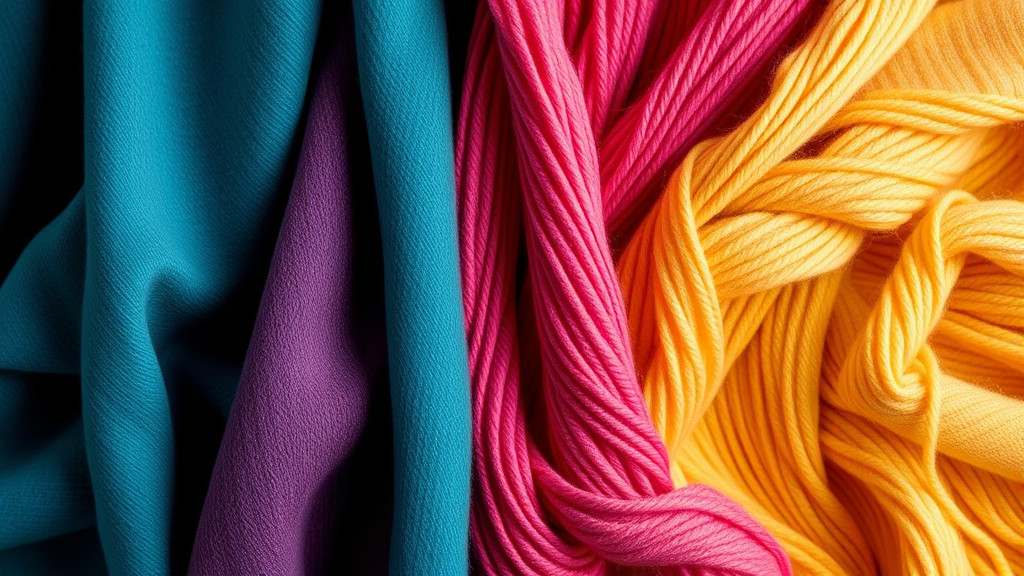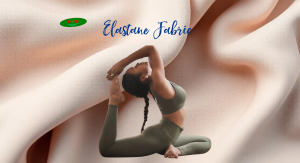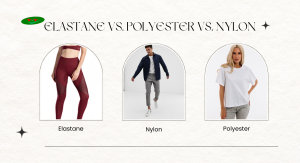In the world of textiles, the evolution towards more sustainable materials is rapidly changing the landscape. One such innovative product gaining traction is covered spandex yarn. This unique type of yarn not only offers exceptional properties but also serves as a viable alternative to traditional materials.
Understanding Covered Spandex Yarn

Covered spandex yarn is a specialized type of elastic yarn that consists of a core made from spandex (also known as elastane) covered with another type of fiber, typically nylon or polyester. This configuration provides an optimal balance between stretchability and comfort, making it suitable for various applications in clothing and textiles.
Definition and Composition
The main components of covered spandex yarn are the spandex core and the covering fiber. The spandex portion lends its remarkable elasticity, allowing garments to stretch and recover without losing their shape. The covering material adds durability, texture, and aesthetic appeal to the yarn.
Spandex itself is a synthetic fiber composed primarily of polyurethane, which provides superior elasticity compared to natural fibers. When encased in another fiber, such as nylon, the yarn benefits from both the strength of nylon and the flexibility of spandex. This combination enables manufacturers to create fabrics that feel soft against the skin while still offering significant stretch.
The blend of fibers used in covered spandex yarn can vary significantly, allowing designers to tailor their products to specific needs. Commonly, nylon or polyester is chosen for covering, providing a smooth finish and enhancing the yarn’s performance characteristics. Other blends may include cotton or modal, promoting breathability and softness.
Properties and Characteristics
One of the standout features of covered spandex yarn is its remarkable elasticity. Fabrics made from this type of yarn can stretch considerably and return to their original shape after being pulled or compressed. This property makes it especially popular in activewear and fitted garments where freedom of movement is paramount.
Another characteristic is the durability of textiles made from covered spandex yarn. The covering fiber protects the spandex core from abrasion and wear, leading to longer-lasting garments. Additionally, these fabrics tend to resist wrinkling and retain their appearance after repeated washings.
Fabrics produced with covered spandex also offer excellent recovery capabilities. After stretching, these textiles bounce back into their original form, ensuring the garments maintain their fit over time. This quality is particularly appreciated in items like leggings, swimwear, and other active apparel where snug fits are essential.
Common Applications
Given its impressive range of properties, covered spandex yarn finds application across various industries. It is widely utilized in the fashion industry for making form-fitting clothing such as dresses, tops, and activewear.
Activewear manufacturers particularly favor it because it enhances the overall performance of the garments. The ability to move freely contributes to comfort during workouts, while the moisture-wicking properties help keep the body dry.
Moreover, covered spandex yarn is essential in the production of undergarments, hosiery, and swimwear. Its elasticity and softness ensure a snug, comfortable fit that conforms to body shapes and movements. As consumers increasingly seek out stylish yet functional clothing, the demand for covered spandex yarn continues to rise, cementing its role in modern textile production.
Exploring Air Covered Spandex Yarn
Air covered spandex yarn is a variant of covered spandex yarn that incorporates air into the covering process. Unlike traditional covered spandex, which uses a tight wrapping of the covering fiber around the spandex core, air covered spandex includes strategically placed pockets of air within the covering, resulting in a lightweight yet stretchy fabric.
Definition and Composition
Air covered spandex yarn consists of a similar composition to conventional covered spandex yarn, where a spandex core is wrapped in another fiber. However, the key differentiation lies in the method of wrapping. During production, the covering fiber is expanded to create small air spaces, producing a yarn that is lighter in weight while still maintaining excellent elasticity.
The introduction of air allows the yarn to provide a plush feel alongside its stretchy qualities. The outer covering, often made from nylon or polyester, plays a crucial role in determining the overall performance of the finished fabric.
The structural integrity remains intact, ensuring that the yarn does not sacrifice strength for lightness. Moreover, air covered spandex yarn can be produced using various blends, enabling customization for specific applications while retaining its inherent properties.
Properties and Characteristics
The most defining characteristic of air covered spandex yarn is its lightweight nature. Fabrics made from this yarn are particularly sought after in industries where breathability and comfort are essential. The presence of air pockets creates a softer, cushioned effect against the skin.
Flexibility is another crucial aspect of air covered spandex yarn. Like its covered counterpart, it allows for a wide range of motion. This is especially beneficial in athletic wear and dance outfits, where unrestricted movement is vital.
Additionally, air covered spandex yarn exhibits excellent moisture management properties. The design helps wick away sweat, making it ideal for high-performance environments where temperature regulation is needed. This capability further enhances the appeal of air covered spandex in the sportswear market.
Common Applications
Air covered spandex yarn has carved out its niche in various applications, particularly fitting within sectors focused on performance and comfort. Sportswear brands frequently utilize this yarn to create high-tech athletic gear that melds function with style.
Yoga pants, fitness tops, and athletic shorts all benefit from the lightness and stretch provided by air covered spandex. The pursuit of comfort in these garments aligns perfectly with consumer expectations in today’s active lifestyle market.
In addition to active apparel, air covered spandex is increasingly being employed in casual wear and everyday clothing. Fashion designers appreciate its versatility, incorporating it into dresses, skirts, and even loungewear. The yarn’s ability to conform to body shapes without feeling restrictive appeals to those seeking both aesthetic and practical benefits in their clothing.
Key Differences Between Covered Spandex Yarn and Air Covered Spandex Yarn
Although covered spandex yarn and air covered spandex yarn share common roots in terms of their base components, they diverge in critical aspects related to production processes, performance metrics, and cost implications. Understanding these differences aids manufacturers and consumers in selecting the right yarn for their specific needs.
Production Process
The production methods for covered spandex yarn and air covered spandex yarn reveal fundamental distinctions. Traditional covered spandex yarn is manufactured through a straightforward wrapping process, wherein the covering fiber is tightly wound around the spandex core. This method results in a compact structure conducive to durability and elasticity.
Conversely, the creation of air covered spandex yarn involves an additional layer of complexity. Manufacturers must manipulate the covering fiber to incorporate air during the wrapping phase. This process demands precise control to ensure uniform air distribution.
While both methods yield high-quality yarns, the incorporation of air in air covered spandex involves a greater investment in technology and skill. This technological differentiation can play a role in determining production efficiency and ultimately impacts pricing structures.
Performance Metrics
In terms of performance, covered spandex yarn excels in offering excellent durability and recovery. The tightly wrapped construction ensures resilience against wear and tear, making it suitable for long-lasting garments. Furthermore, its ability to retain shape and offer consistent stretch makes it a preferred choice for many traditional applications.
On the other hand, air covered spandex yarn shines in areas demanding lightweight comfort and breathability. The inclusion of air pockets grants this yarn exceptional moisture management, which is vital for high-intensity activities. However, the trade-off may come in durability; while still strong, air covered spandex may not withstand heavy usage as effectively as its covered counterpart.
Consequently, the choice between these two yarns often hinges on the specific intended use of the fabric. For robust, long-term applications, covered spandex yarn may emerge as the better option. In contrast, for garments geared towards comfort and breathability, air covered spandex yarn takes the lead.
Cost Implications
When considering cost implications, the differences between covered spandex yarn and air covered spandex yarn become apparent. The traditional manufacturing process for covered spandex yarn tends to be less expensive due to its simplicity. This affordability can make it an attractive choice for mass production.
However, the advanced technology required to produce air covered spandex yarn often results in higher costs. The specialized techniques involved in creating air pockets can increase production times and resource usage, contributing to a higher price point.
In the grand scheme of product development, manufacturers must consider their target markets when weighing these cost implications. If a brand seeks to provide luxury, high-performance sportswear, investing in air covered spandex yarn may align well with their brand positioning. Conversely, for basic activewear lines, traditional covered spandex may suffice while keeping costs manageable.
Choosing the Right Option for Your Needs
Choosing between covered spandex yarn and air covered spandex yarn requires careful consideration of several factors. These encompass the intended applications, necessary performance attributes, and sustainability goals. With growing awareness of environmental issues, manufacturers and consumers alike must weigh their options regarding sustainability.
Factors to Consider
When selecting between these two types of yarn, users should evaluate the specific requirements of their projects. Variables include garment type, desired stretch levels, and the environment in which the fabric will be worn.
For instance, if designing workout gear for intense physical activities, air covered spandex yarn may be ideal due to its moisture-wicking properties and lightweight feel. Alternatively, for garments requiring durability and shape retention, covered spandex yarn would likely be more appropriate.
Additionally, understanding the target demographic can aid in decision-making. Younger consumers may prioritize comfort and breathability in their clothing choices, making air covered spandex appealing. Meanwhile, customers seeking longevity in their garments might gravitate towards traditional covered spandex yarn.
Industry-Specific Recommendations
Different industries will have varying preferences for yarn types based on their unique needs. In the activewear sector, brands often lean towards air covered spandex yarn for its lightweight and breathable advantages, aligning with current fitness trends emphasizing performance.
Conversely, sectors focusing on formal wear or structured garments may prefer covered spandex yarn for its ability to provide reliable shaping and support. The lingerie and shapewear markets heavily rely on the stability offered by covered spandex to create comfortable yet form-enhancing designs.
Ultimately, a thorough understanding of industry-specific requirements can guide manufacturers in selecting the most suitable yarn for their products. This knowledge, combined with insights into consumer trends, positions brands to meet market demands effectively.
Sustainability and Environmental Impact
As sustainable practices gain traction in the textile industry, both covered spandex yarn and air covered spandex yarn present opportunities for eco-conscious innovation. The environmental impact of yarn production remains a pressing concern, prompting manufacturers to explore greener alternatives.
When considering sustainability, it’s important to examine the sourcing of fibers used in both types of yarn. Utilizing recycled materials and responsible sourcing practices can enhance the ecological footprint of covered spandex yarn.
Air covered spandex yarn, while not inherently more sustainable, can also leverage innovations in production to reduce waste and energy consumption. The ongoing advancements in recycling technologies and eco-friendly materials can pave the way for both yarn types to contribute positively to sustainability efforts.
Ultimately, the conscientious choice of yarn, coupled with responsible manufacturing practices, can help address environmental concerns in the textile industry, allowing brands to resonate with consumers who prioritize sustainability.
Conclusion

The exploration of covered spandex yarn and air covered spandex yarn reveals a fascinating intersection of innovation, performance, and sustainability in the textile industry. While both types of yarn possess distinct properties and applications, they each cater to diverse market needs.
Understanding the nuances of these yarns empowers manufacturers and consumers to make informed decisions tailored to their specific requirements. As the textile industry continues to evolve, the shift towards sustainable alternatives offers a promising pathway for creating environmentally friendly products without sacrificing quality or performance.
By embracing these advanced yarn options, stakeholders in the textile industry can contribute to a more sustainable future while meeting the demands of a discerning consumer base. Whether opting for the durability of covered spandex or the lightweight comfort of air covered spandex, the possibilities for creativity and innovation are boundless.
Address: Thanh Hoa Hamlet, Thanh Dien Commune, Chau Thanh District, Tay Ninh Province, Vietnam
Mobile/whatsap: (+84) 984.841.239
Mail: sale@tanithread.com
Website:https://tanithread.com/



